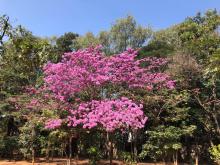
Abstract: The earliest rock-cut “cave” temples were scooped out of the cliffs of the Deccan Plateau in the 2nd century BCE, and this tradition continued till the 10th century. All the three major Indic religions – Buddhist, Hindu and Jain, carved these rock-cut sanctuaries during this period. The earliest Buddhist excavations of more than two millennia ago were either halls for worship known as chaityas or residences for monks known as viharas. Most of these structures, though carved out of living rock, imitated the wood and thatch structures extant at the time, and offer unique insight into the architecture of early times, in perishable materials. The early Buddhist excavations were followed by Saiva and Jain monuments. The climax of these rock-cut monuments, arguably, is the Kailasanatha Temple at Ellora, which is one of the marvels of Indian architecture.
This talk will take up a few sites of rock-cut monumental architecture in Western Maharashtra for discussion. Apart from well-known sites like Ajanta, Ellora, Kanheri etc., lesser visited sites like Pitalkhora, Ghatotkacha and even the Aurangabad Caves will be discussed. A long-standing interest of mine has been the study of techniques used by early artisans to split, process and carve stone. The techniques employed by the artisans who created these caves will be discussed, and compared with other areas such as Badami, where rock-cut monuments were carved during the 6th century CE.
About the speaker: Srikumar M. Menon is an architect with a keen interest in the archaeology of the Indian subcontinent. His areas of academic interest vary from megaliths and other prehistoric monuments to the origins and evolution of later monuments such as stupas and temples. He is also interested in understanding the knowledge systems possessed by the builders of prehistoric, and later monuments, as embedded in the monuments themselves. He is working at NIAS since 2016.
